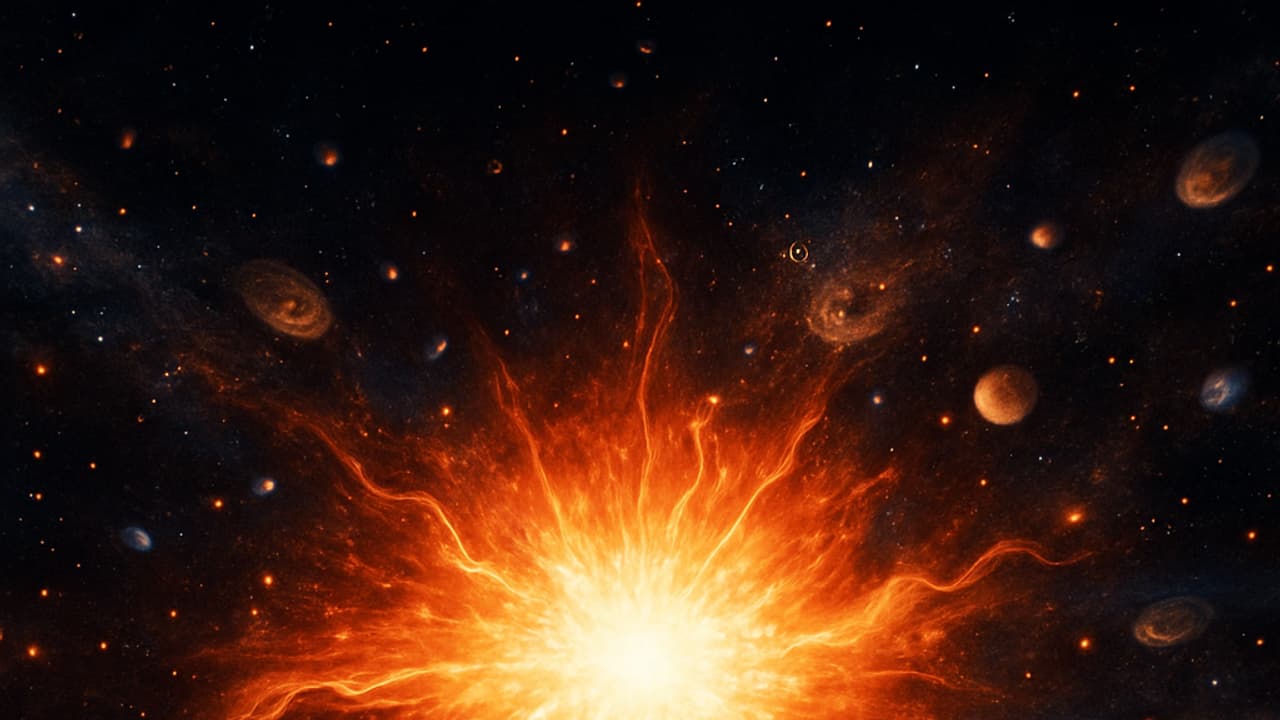A sweeping new study dives deep into how ultra-heavy particles behave after high-energy collisions, revealing they don't just vanish after the initial impact but continue interacting like silent messengers from the dawn of time.
A groundbreaking new study has dived deep into cosmic mystery, delving into the fate of ultra-heavy particles born from cataclysmic atomic collisions that mimic the fiery crucible of the Big Bang. Contrary to previous assumptions, these particles don’t simply vanish into the ether post-impact — they linger, interact, and whisper secrets from the universe’s earliest heartbeat.

This compelling investigation, published in Physics Reports, is a collaborative triumph by physicists Juan M. Torres-Rincón from the University of Barcelona’s Institute of Cosmos Sciences (ICCUB), Santosh K. Das from the Indian Institute of Technology Goa, and Ralf Rapp from Texas A&M University. Their review charts the enigmatic journey of heavy-flavour hadrons — particles containing charm and bottom quarks — as they navigate through an extreme environment known as hadronic matter.
This exotic matter emerges during the final phase of high-energy nuclear collisions at premier scientific facilities like CERN’s Large Hadron Collider (LHC) and the Relativistic Heavy Ion Collider (RHIC). These high-speed smashups briefly recreate the searing temperatures — over a thousand times hotter than the Sun’s core — that existed just microseconds after the Big Bang.
As the violent quark-gluon plasma (QGP) cools, it transitions into hadronic matter — a dense swarm of protons, neutrons, and other subatomic entities. The newly published review dives into what becomes of the heavy quark-laden particles, like D and B mesons, during this metamorphosis and the ensuing cooling phase.
Heavy quarks: The cosmic thermometers
Heavy quarks act like silent cosmic probes. Forged in the very first breath of the collision, their sheer mass causes them to drift sluggishly through the dense fireball, colliding and interacting with the matter around them in distinctive ways. Tracking these interactions is vital to decode the dynamic behavior of the medium and reconstruct the early conditions of our universe.
The authors meticulously analyzed a spectrum of theoretical frameworks and experimental evidence, zeroing in on how heavy hadrons engage with lighter particles in the post-QGP hadronic stage. These interactions, often overlooked, significantly shape observable features like particle flow and energy loss.
"To really understand what we see in the experiments, it is crucial to observe how the heavy particles move and interact also during the later stages of these nuclear collisions," says Juan M. Torres-Rincón, member of the Department of Quantum Physics and Astrophysics and ICCUB.
"This phase, when the system has already cooled down, still plays an important role in how the particles lose energy and flow together. It is also necessary to address the microscopic and transport properties of these heavy systems right at the transition point to the quark-gluon plasma," he continues. "This is the only way to achieve the degree of precision required by current experiments and simulations."
To illustrate, imagine tossing a heavy ball into a tightly packed swimming pool. Even after the initial splash fades, the ball keeps bumping into swimmers, subtly reshaping its path. Similarly, heavy particles created in high-energy collisions continue to interact with the surrounding medium long after the initial fiery burst — and these subtle motions carry vital clues about the universe’s origin.


